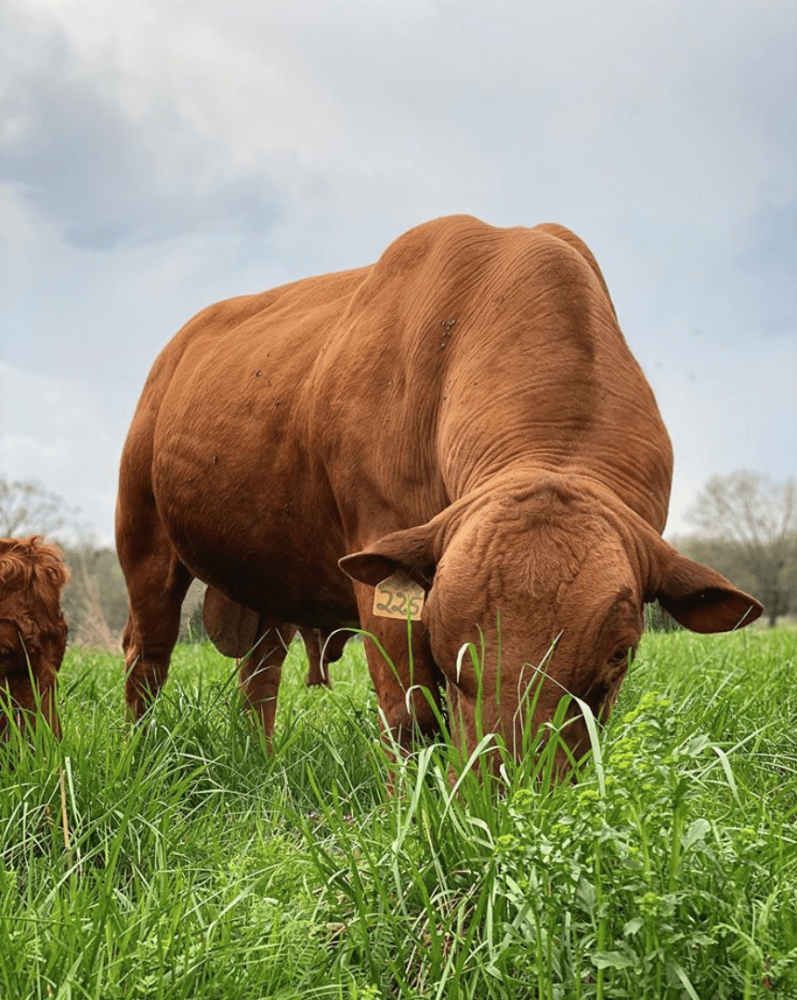A couple of weeks ago, the World Resources Institute hosted a webinar to discuss the potential for regenerative agriculture to sequester carbon. In the institute’s 564-page report from last year — Creating a Sustainable Food Future — WRI chose not to include the potential carbon sequestration of certain farming practices in its calculations, preferring to focus the report’s emphasis on other activities such as reducing land conversion and a concerted consumer move towards plant-based diets as a means to mitigate agriculture’s impact on the environment.
The gist of the discussion: Although a number of regenerative practices are beneficial for improving soil health, productivity, and more, claims about the amount of carbon that they can sequester are overblown. The takeaway: regenerative agriculture is not the panacea that so many people claim it to be, including policymakers, farmers, and consumers.
“Soils have physical capacity to store more carbon. However, due to scientific and practical challenges, and scientific uncertainty, we think the realistic ability to sequester additional carbon in working agricultural soils is limited in scale,” read one of WRI’s webinar slides. “Stabilizing existing carbon in agricultural soils is important to sustaining long-term productivity, but additional actions will be necessary to close the 11 Gt emissions mitigation gap.”
The webinar, which was accompanied by a blog post from the WRI report’s authors, generated a number of reactions including a thorough rebuttal from a leading group of academics from across the world, including Keith Paustian, the winner of the FoodShot’s Soil 3.0 Groundbreaker Prize last year.
As a farmer who uses many of the practices listed under regenerative agriculture like intensive grazing management, multi-species grazing, and finishing animals on grass in lieu of grain, it’s perhaps unsurprising that the WRI webinar also left a bad taste in my mouth. My reaction was less about the specific criticism of carbon farming and more due to the assumption that sequestering carbon is the sole focus of this movement.
As WRI outlines quite clearly in its massive report there’s no silver bullet solution for a more sustainable food system. In fact, the Institute presents a menu of 22 actions the industry needs to take if greenhouse gas emissions are to come down and global warming kept below catastrophic levels. So why can’t regenerative agriculture be another menu item?
There’s possibility, and then there’s feasibility
While I disagreed with its main conclusions and view of regenerative agriculture, the presenters brought up a few good criticisms. Many of the studies that seek to evaluate the total amount of carbon that could be sequestered in the soil through regenerative practices are measuring the total possibility, which is a very different beast compared to measuring the actual feasible outcome. This is a good point. A major problem facing the regenerative agriculture movement is a lack of convincing and varied data.
There are some excellent case studies — one of which came up in the conversation and even caught the ire of plant-based burger company Impossible Foods last year. White Oak Pastures in Georgia concluded, after a third-party life cycle assessment conducted at its ranch, that its grass-fed beef operation was carbon-negative. This means its cows sequestered more carbon than they produced in their lifetimes. But the replicability of what that farm achieved has been called into question.
As with everything in farming, where you are located, what type of soil you have, climate, water availability and so on all play a role in how successful certain practices can be, regenerative or not. What works well on my farm in the Ozarks will likely fail miserably on a 10,000-acre ranch in New Mexico.
But does that mean work should halt in this area because there’s no one size fits all method? Granted so-called “plug-and-play farming” has got us to where we are today; able to feed the global population and then some, but equally it’s created a centralized, polluting agriculture industry that’s now under attack.
WRI admitted that regenerative practices like cover cropping were still beneficial and worthy pursuits, but said they’re potential to mitigate climate change was overplayed. Of course, it’s going to take a lot more than just management intensive grazing or cover cropping to draw down enough carbon to reverse climate change and protect existing carbon stores. And WRI’s own “menu” of 22 actions in its report points to that lack of a silver bullet.
Fossil fuels remain the largest source of GHG emissions in the US. Electric cars have been touted as a way to reduce one’s personal fossil fuel footprint. But electric cars won’t be enough on their own to undo the damage considering that fossil fuels power electricity, heat, and more. So, should we refrain from buying them?
Why exclude regenerative practices altogether when there is still so much to learn, so much to test and so much potential?
WRI is missing the entire spirit of regenerative agriculture
As I’ve mentioned in nearly every article I’ve written for AFN about regenerative agriculture, the movement is in its nascent stages and therefore often open to interpretation. You can’t open a dictionary and find a neat, one-sentence summary of what it hopes to accomplish. Even five years from now I think a one-liner will be a poor fit for regenerative agriculture.
This is where WRI seems to have really missed the mark. The promise of regenerative agriculture isn’t a mere bid to sequester more carbon; it’s an attempt to not only acknowledge the nuances of producing food to feed billions of people but to embrace them in conjunction with nature. It just so happens that it has been shown to sequester carbon at the same time as bolstering soil health, improving local biodiversity, cleaning waterways, producing more nutritional food, extracting less from nature, and applying fewer harmful chemicals.
It also has the potential to put more money into farmers’ back pockets. Sales channels for regeneratively-raised food are often shorter, giving farmers a greater cut, sometimes they can charge premiums consumers are willing to pay, but more importantly, they will also often be spending less money on inputs such as chemicals, albeit with higher day-to-day management costs.
We are living in a time when farmers are facing some of the worst prices and highest operating costs of all time, while consumers suffer a myriad of diet-related health problems and the ecosystem continues to be burdened with the unavoidable realities of a production system where success is based solely on yield.
Regenerative agriculture demands a proper accounting for the human cost of our current food production system whether through the abhorrent conditions for agricultural workers and the prices paid to farmers that fail to reflect the true cost of food production. Our current food system not only takes an extractive approach to the land but an extractive approach to the men and women who have made it their life’s work.
While the recent pandemic has highlighted some resilience in our food system, it’s also revealed the many pitfalls of a heavily consolidated system where food is transported thousands of miles and through multiple hands. Regenerative agriculture pushes for decentralized food production that relies more on models bespoke to the communities they seek to feed.
Will Harris, founder of regenerative posterchild White Oak Pastures, has said the idea isn’t to expand his business but to have many businesses pursuing similar practices similar to his.
“White Oak Pastures will never be a multinational corporation,” Harris told Civil Eats last year during a high profile media spat with Impossible Foods. “There will never be a truly regenerative, humane, fair farm that will scale to a national level—much less multinational. Instead, every rural county in all 50 states should have a White Oak Pastures or two.”
Deconsolidation, increased food sovereignty, and valuing more than just yield is a hard sell for many current stakeholders in our food system who tend to view most things through the lens of a profit margin. It could also mean you’re not able to buy tropical fruits in December in the MidWest of the US, but we certainly won’t perish as a result.
There is a division among regenerative agriculturalists about whether the movement must focus on data to substantiate its claims — such as how much carbon can be sequestered — or whether the time has come for a more holistic approach to answering the question of whether our food system is working. Maybe it’s time to create a system that values both. And maybe it’s time to realize that our food system needs to do a whole lot more than sequester carbon, like pay farmers for the true cost of producing food.
WRI’s criticism of regenerative agriculture based on its conclusions about the feasibility of carbon sequestration is a foolish exercise in throwing the bovine out with the bathwater.




